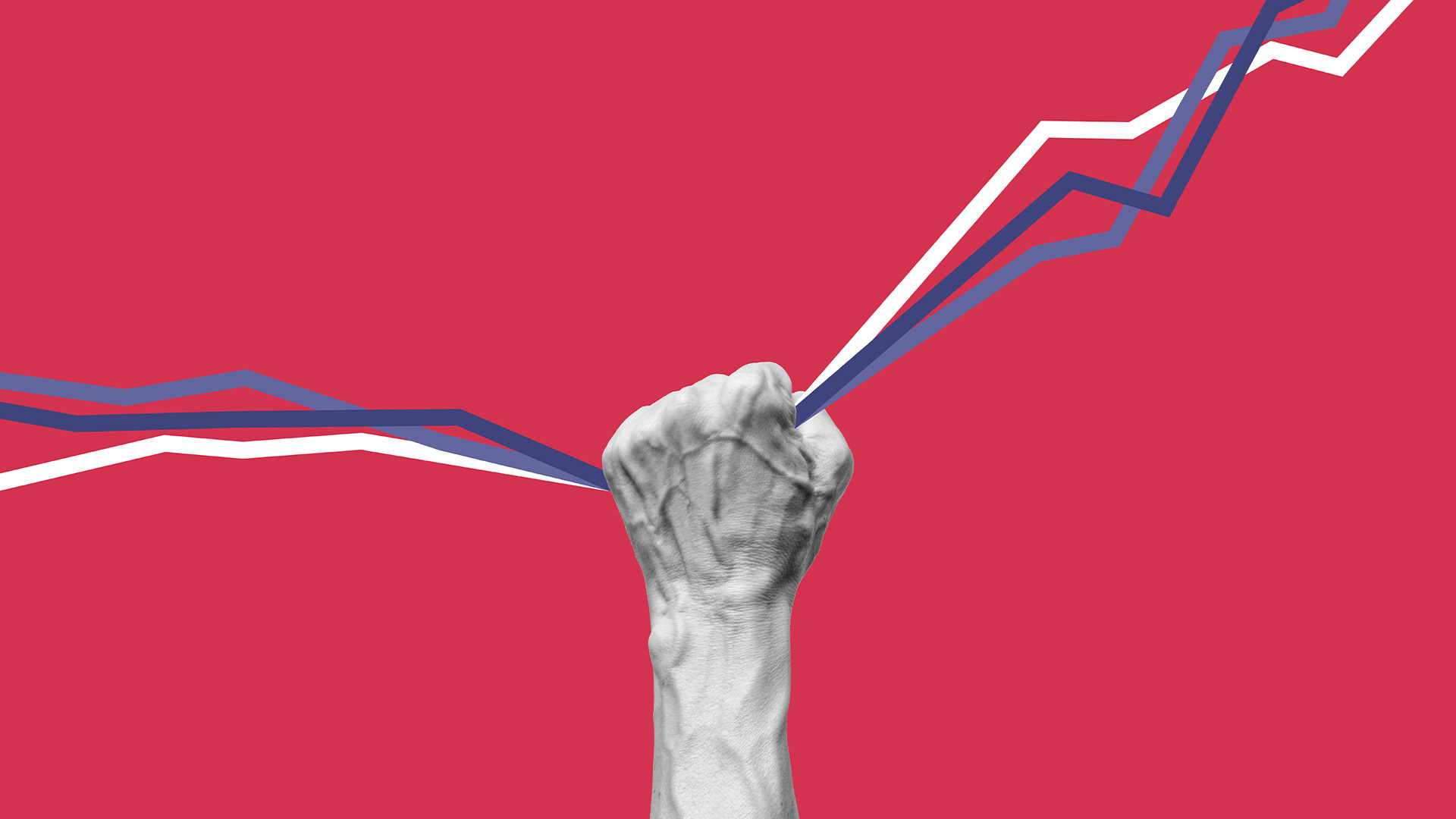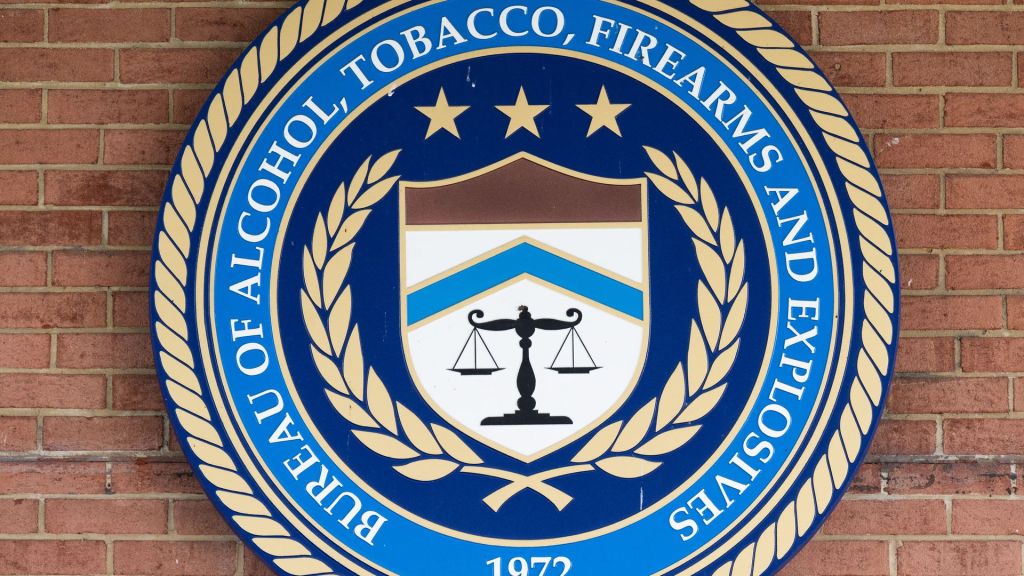
Simone Del Rosario: You’ve seen the word splattered across the news, fears of a recession since Friday’s jobs report where the rising unemployment rate triggered a recession indicator known as the Sahm rule.
And I’m joined by the woman behind that rule, Claudia Sahm, chief economist for New Century Advisors, founder of Sahm Consulting.
Claudia, your ears must be burning nonstop since Friday. It’s hard to say. You know, when we think about recessions, we think about you, but here we are. How are you?
Claudia Sahm:
Great, thank you. Appreciate being here.
Simone Del Rosario:
Let’s talk about your rule in more basic terms. It measures the three month moving average of the unemployment rate compared to the year’s low. And when that rises half a percentage point, we’re usually in a recession, the early stages, right?
Claudia:
That’s correct
Simone Del Rosario:
Okay, you don’t make the recession, you just make the rule, but it has such a good track record. So, this happened on Friday, we triggered the Sahm rule. Are we in a recession right now?
Claudia:
No, we are not. So the origin of the rule that was named after me, so this recession indicator, was part of a policy proposal to put fiscal policy in place that would happen automatically in a recession. So in the case, send out stimulus checks. As soon as we’re early in a recession, let’s get some extra help out to people.
And so then really what’s now the Sahm rule was the supporting actress in all of thatsaying, okay, well, when do we know? What’s a very reliable way to say, it’s time, go, you know, let’s do some policy, help people. And so then I look back over history and looked, it is very much the case that we see the unemployment rate will start to rise and then it really gets going into a recession. Now that reflects a very powerful people losing paychecks, they can’t spend as much, more workers lose paychecks.
And it goes beyond that. The unemployment rate tells us just generally, are there lots of job opportunities or people getting wage increases? How are they feeling about the future? Right? So that unemployment rate can capture a lot and it, and we should be concerned that it has been rising over the past year. And this is not just about hitting a particular level or in July, we saw a, you know, a larger jump than we’ve seen the Sahm
looks it averages across months. It looks over a year long period. So it’s trying to get this direction that we’re headed and it’s not a good direction. Now there are some very specific reasons, very special reasons that the Sahm rule right now looks more ominous than it is. And the first thing they say about we’re not in a recession is anytime we make a pronouncement like that, we should look around and in fact,
Broadly speaking, this economy is still growing and a recession means that it’s contracting, right? So we still see consumer spending, we’re adding jobs, industrial production. It’s slowed down, it’s not growing as fast, but we’re still growing. So that is not, that’s not a recession right now. So what’s going on with the unemployment rate? So there’s the bad reason unemployment rate goes up is there’s less demand for workers, it gets harder to find jobs. hiring rates haveH come down a lot. It is a lot harder if you’re on the outside trying to find a job right now. So unemployment has gone up for a bad reason. It does that in recessions. The unemployment right now is also going up for one of the good reasons. So we have had more people join the workforce who weren’t working before. There in particular was a big increase in immigration. And that was so important for solving the labor shortages that we’ve been suffering through. And yet,
when it takes time to adjust. I mean, that should be the theme of this cycle since the pandemic, that big messy changes take time and it’s painful. It can make it really hard to read where the economy is, but right now we have people who’ve come in and some of them it’s just going to take time for them to find jobs. And in that period, the unemployment rate will go up. Once they find the jobs, it can come back down. And frankly, people coming in to
That’s a good sign for keeping the economy growing because there more workers. So that’s an extra piece that hasn’t because it’s been so abrupt with some of the changes in the labor force early on the pandemic when people dropped out and now we have immigration, we have people coming in. It’s just that there’s that extra piece of immigration or that extra piece of unemployment rate increase looks bad, but actually it’s probably not now.
The trick is we can’t really say for sure how much of one or the other. Right? So I can say looking broadly what we know about the economy, we’re not in a recession. I mean, it’s never time to panic, but it’s also not recession time either. So it’s not a recession. And yet the risks are there, right? Because we do have these increases in the unemployment rate that are of the more problematic, we just don’t know.
Simone Del Rosario:
Yeah, so I’ll reiterate, we’re hearing from the woman herself. We are not in a recession right now. You created the rule, the indicator has been triggered, and yet we are going to say, you know, August 2024, this is an outlier, jobs report was from July, but it is a dramatic increase from the unemployment rate that we were seeing. I crunched the numbers from that 3 .4 % historic low unemployment rate, and it’s a 26 % increase in that unemployment rate. So definitely a big jump.
You said that when you created this rule, when you were trying to find these indicators, was so we could act. It was so you could implement policies. So looking at what’s happening right now, there’s obviously a major movement happening with unemployment. What’s the remedy?
Claudia:
There is a very clear policy lever out there to be pulled and that is the Federal Reserve beginning to reduce interest rates. And that’s the most straightforward one at this point. And the Fed has told us they are pointed at doing that. Before we found out about July’s employment report that they were, you know, that’s the path they were on, seeing that there is probably more weakness or at least more slowing in the labor market than we had previously thought, that probably means that they can get going in September, and maybe even cut interest rates more quickly than they had expected. And it’s important that they have that lever to pull. that’s why I am, it’s so important that we’re still in a position of strength. Like we’re not in a recession, we are still growing. There’s a lot of good things in US economy. The direction is not good, right? We don’t need to soften or weaken more than we have and that’s kind of where we’re pointed. And the realization that well the Fed has been putting pressure on the economy to slow it down and for them to say okay we don’t need to slow it down anymore and reduce risk. That is the kind of the the release valve to this that can get us to a good a good a good place right? That we just kind of settle into the jobs catch up, we keep growing, we stay away from the recession. That’s the path. And you can tell the story and the path is there. It’s just anytime you get close to these real risky places in the economy, like a recession, you have to be careful because the people can get scared, markets can react. Things can unfold in unpredictable ways. So I think people should have their guard up more than kind of a typical time and yet…There’s still a path to this all being just.
Simone Del Rosario:
Are you concerned about a near -term recession or are you confident that when the Fed pulls that lever that the risk is over?
Claudia:
I’m a macro economist. I’m always concerned. this is, you know, I devoted much of my career to studying recessions and how to fight them. And so I think, you know, it’s a, it’s a risk that we should always be aware of, or at least policymakers should certainly be aware of. I, it is not my base case. And again, I don’t want to make light of, you know, the, the Sahm rule, the pattern I identified, there are other similar people looking at labor market conditions, not like the only one that’s pointed to weakness right now.
It does have a really strong track record and I don’t want to dismiss it out of hand. Like something is happening and I don’t want to just write off any of the bad signs because now would be the time to act on them. given all that, think the risks are there. They’re not overwhelming. And we are…
Because we’re still in a position of relative strength that gives us a real leg up in terms of like what happens over the next three months, six months, 12 months.
Simone Del Rosario:
Okay, let me ask you this. Did the Fed make a mistake last week by not cutting?
Claudia:
I have made the argument for much of this year that the Federal Reserve should begin to gradually lower interest rates. That inflation was coming down, yes, the beginning of the year was a little rough. We’re also learning that we probably got headfaked by some of that data. We might be getting headfaked by some of the employment data now. It might not be as bad as it looks, right? But there was definitely a case, inflation is coming down, Federal Reserve should get out of the way.
So I had said last week they should start gradually reducing waste because it would be so much better to gradually reduce interest rates. Watch how the effects on the economy, because there are many question marks. We don’t know exactly how this amount of interest rate cuts translates into that amount of spending. All so just to kind of watch and see what the economy does, they are in a position now where if things continue to slow, the Fed may need to decrease interest rates more quickly. And at any time, and we’ve seen in the last few days, it can be pretty disruptive. Like when news comes out, Fed Chair Jay Powell told the world on Wednesday, the labor market is normalizing. We don’t want to see more weakness. It’s all good. And two days later, we get a very disappointing, it doesn’t look so good.
labor market and more weakness than we’d like to see. you know, hindsight’s 20 -20. I think they had, I think they could have looked like, they could have been the winner last week if they had gone ahead with a cut, but that’s not, you don’t get to go back and redo. I firmly believe they will assess the situation and take the steps necessary. just a, you know, it takes time. It takes time for their tools to. So they do need to get going. But it’s not like all is lost. It’s just they’re going to have to probably play some catch up and they won’t get to do the victory lap.
Simone Del Rosario:
Yeah, I keep saying, you know, if they had cut last week on Wednesday, they would have looked like they had a crystal ball when Friday came out. And they’d be like, wow, look, they were right on the ball with that one. They knew exactly what they were doing. And now we’re waiting until September. You know, I’m with you. I’m really against any kind of panic with all of this. And there’s so much room to move on interest rates.
But that said, they’re finding themselves back in a position that they were when they started the hiking campaign, which was that they started hiking too late and then they were doing massive hikes and there’s, you all this talk now about how much they may have to cut in September and beyond. Do you think that’s overblown?
Claudia:
This cycle was always going to be messy. This has been a very hard to read economy. If you think about it, they… 2022 the Fed went really fast. They raised interest rates really quickly. There were a lot of concerns that we were going to be in a recession. That that was going to be part of what we had to have happen to get inflation down because it had gone up. Well, in fact, two years later, there has been no recession and we had
big disinflation. So yeah, it was not pretty in terms of like how you would necessarily want the policy to roll out, but things worked out relatively well. So just because it doesn’t have this elegant of gradual cuts, that doesn’t mean that it’s about getting the job done. Right? So I don’t, I don’t feel like it’s, this is, this is very disruptive. Now I do, it clearly, it creates strain on families and businesses when they see the stock market, big numbers moving and what comes next and there’s a lot. Fear can take on a life of its own and that is something that lives around the edges and in the middle of a recession. So you don’t want to treat those dynamics lightly but that’s, we’ve dealt with a very uncertain, hard to
world for the last four and a half years. So we’re not done with the drama. So it’s just a matter of, well, you know, that was a missed opportunity by the Fed. At least that’s what it looks like today. We’ll get, you know, inflation data next week. Maybe, maybe it doesn’t. But it looks like that was a missed opportunity, but there are so many more opportunities ahead of them to do good policy.
Simone Del Rosario:
Yeah, I feel like everybody was crying, know, victory lap, they’re doing it, soft landing, it reminded me of like the race walking in the Olympics where the woman who was leading and was about to win gold started celebrating before crossing the finish line and got passed. We’re gonna cross the finish line. Hopefully it’s without a recession. Hopefully it’s without more drama than we need, but certainly it has injected a little bit more drama with all of this going on with the jobs report, but we’re so happy that you were able to join us.
Claudia Sahm, chief economist for New Century Advisors, founder of Sahm Consulting, and the woman behind the Sahm Rule who says, despite the fact that it was triggered, we’re not in a recession and stay calm. Thank you so much.











